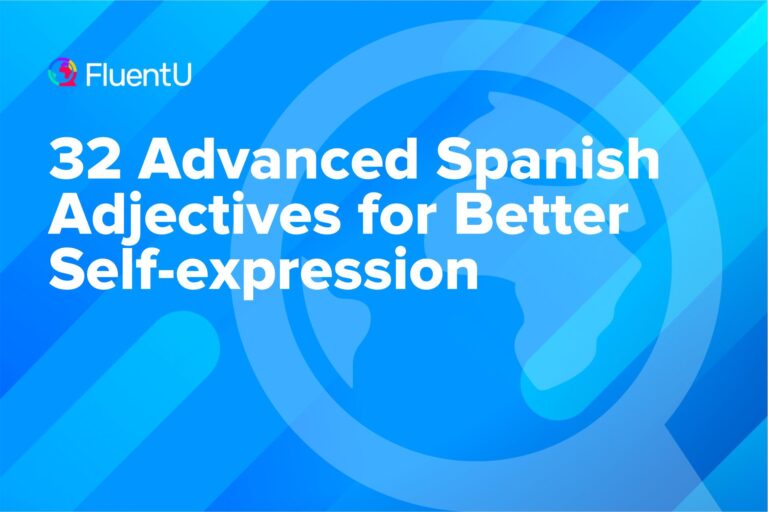How to Use Gustar in Spanish

The Spanish verb gustar is essential for expressing likes and dislikes, but its unique structure can be tricky for learners since it’s very different to how we would say it in English. Unlike the English verb “to like,” gustar flips the subject and object roles, requiring a different sentence order and use of indirect objects.
Confused? Read on to see exactly how gustar works, including its conjugation, grammar rules, and cultural nuances.
Download: This blog post is available as a convenient and portable PDF that you can take anywhere. Click here to get a copy. (Download)
Introduction to Gustar
If you look up the verb gustar in a dictionary, you’ll get translations such as “to like,” “to taste,” “to enjoy” and “to be pleasing,” among others.
However, gustar is not a regular Spanish verb.
Here’s a breakdown of how to conjugate it:
| Object Pronoun | Spanish | Translation |
|---|---|---|
| A mí | me gusta(n) | I like |
| A ti | te gusta(n) | You like |
| A ella/él/usted | le gusta(n) | He/she/you (formal) likes |
| A nosotros | nos gusta(n) | We like |
| A vosotros | os gusta(n) | You (plural) like |
| A ellos/ellas/ustedes | les gusta(n) | They/you (plural) like |
Instead of changing according to the pronoun, gustar changes depending on the quantity of the noun that follows it. This is why you’d say gusta for singular objects and gustan for plurals.
For example:
Me gusta esta película. (I like this movie.)
Me gustan las películas de terror. (I like horror movies.)
You can also slightly change the sentence structure and place gustar at the end. For example:
Las películas de terror me gustan. (I like horror movies. Literally: “horror movies are pleasing to me.”)
Using Gustar in Spanish
1. Using gustar changes the word order of the sentence
Take a look at this example:
Nos gustan los fuegos artificiales. (We like fireworks. Literally: Fireworks are pleasing to us.)
If fireworks are what we like, they are the sentence’s subject. So why do they appear at the end?
Well, gustar uses a different sentence structure than other Spanish verbs. It follows this structure:
object pronoun (nos) + verb (gustan) + subject (los fuegos artificiales)
2. The conjugation of gustar depends on the thing being liked
There’s another big difference between gustar and “to like.” In English, the verb is conjugated like normal and refers to the person doing the liking (I like, you like, he likes…).
In Spanish, the verb is conjugated according to the thing we like, which is the subject.
Let me give you a couple of examples:
Me gusta el chocolate. (I like chocolate. — “chocolate” is singular)
Me gusta la pizza. (I like pizza. — “pizza” is singular)
Me gustan los libros. (I like books. — “books” is plural)
Me gustan las tormentas. (I like thunderstorms. — “thunderstorms” is plural)
Remember that gustar only has two possible forms (gusta and gustan), depending on whether the subject is singular or plural.
3. Gustar requires an indirect object
The final difference we can see between English and Spanish is the object of the sentences.
English needs a direct object (DO) after “to like”—a direct object answers the question “what?” or “who?”:
“I like ice cream.” (What do I like? Ice cream.)
“We like romantic movies.” (What do we like? Romantic movies.)
But Spanish requires an indirect object (IO), which answers the question “to what?” or “to whom?”:
Me gusta el helado. (“Ice cream is pleasing to me.” To whom? To me.)
Nos gustan las películas románticas. (“Romantic movies are pleasing to us.” To whom? To us — IO.)
The next section covers this more in-depth.
Spanish Indirect Objects and Gustar
When using gustar, the indirect object comes first.
You don’t even have to consider what you like or the conjugation of gustar! Just add the appropriate indirect object and forget about it.
If you need a refresher on your indirect object pronouns, check out our in-depth post on them here.
These examples should help solidify everything for you:
A María le gusta la tarta de manzana. (María likes apple pie.)
Me gusta Halloween. (I like Halloween.)
Nos gustan los deportes extremos. (We like extreme sports.)
Les gustan las películas italianas. (They like Italian movies.)
You must remember to transform the English subject into the indirect object of the Spanish sentence if you don’t want to sound weird, as you will see in the next section.
Me Gusta vs. Me Gusto
At the beginning of this post, I said you can’t conjugate the verb gustar as if it were a regular verb. This is not entirely true.
You can indeed conjugate it in every pronoun. Have a look:
But as you can see, it’s a reflexive verb. What does this imply?
Simply put, if you say “me gusto,” you’re saying you like yourself. That might make people think that you’re slightly conceited.
Spanish speakers are very aware of this, and they generally don’t use gustar as a reflexive verb unless they really need to, like in these examples:
Si nos gustamos tanto, ¿por qué no estamos juntos? (If we like each other so much, why are we not together?)
Juan es muy creído. Se gusta demasiado. (Juan is very conceited. He likes himself too much.)
Me gusto más cuando estoy contigo. (I like myself better when I am with you.)
And there you have it! If you practice using gustar and always remember to put the indirect object first, the rest is just a walk in the park!
Seeing gustar used in real contexts will make you more confident when using it. For that, you can practice with authentic Spanish media and videos on FluentU.
FluentU takes authentic videos—like music videos, movie trailers, news and inspiring talks—and turns them into personalized language learning lessons.
You can try FluentU for free for 2 weeks. Check out the website or download the iOS app or Android app.
P.S. If you decide to sign up now, you can take advantage of our current sale!

Gustar makes it easy to express what you like and dislike. Learn how to use it correctly, and your Spanish-speaking friends will be impressed!
Download: This blog post is available as a convenient and portable PDF that you can take anywhere. Click here to get a copy. (Download)
And One More Thing…
If you've made it this far that means you probably enjoy learning Spanish with engaging material and will then love FluentU.
Other sites use scripted content. FluentU uses a natural approach that helps you ease into the Spanish language and culture over time. You’ll learn Spanish as it’s actually spoken by real people.
FluentU has a wide variety of videos, as you can see here:

FluentU brings native videos within reach with interactive transcripts. You can tap on any word to look it up instantly. Every definition has examples that have been written to help you understand how the word is used. If you see an interesting word you don’t know, you can add it to a vocab list.

Review a complete interactive transcript under the Dialogue tab, and find words and phrases listed under Vocab.

Learn all the vocabulary in any video with FluentU’s robust learning engine. Swipe left or right to see more examples of the word you’re on.

The best part is that FluentU keeps track of the vocabulary that you’re learning, and gives you extra practice with difficult words. It'll even remind you when it’s time to review what you’ve learned. Every learner has a truly personalized experience, even if they’re learning with the same video.
Start using the FluentU website on your computer or tablet or, better yet, download the FluentU app from the iTunes or Google Play store. Click here to take advantage of our current sale! (Expires at the end of this month.)







